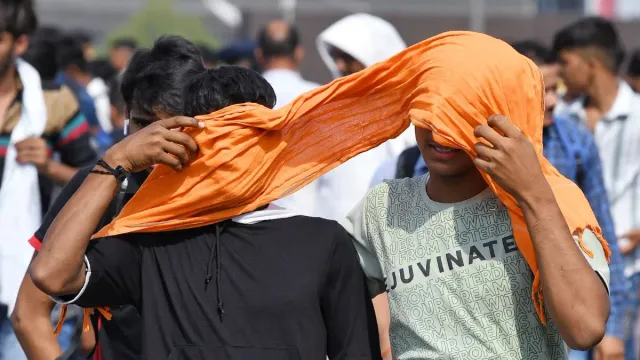- By Abhishek Sheoran
- Wed, 26 Mar 2025 08:20 PM (IST)
- Source:JND
Heatwave Alert In India: Several states across the country have started witnessing a gradual surge in temperature. The mercury level has already crossed 30°C in many areas. Bright sunshine throughout the day is contributing to the prevailing weather conditions. Delhi saw the hottest day of the season on Tuesday.
Meanwhile, the India Meteorological Department (IMD) has predicted that the number of hot days in North-West India will likely double. Last year, India recorded an alarming 554 heatwave days, making it the hottest year in the country’s history.
"Usually, the heatwave period lasts for 5-6 days during the summer season, but this year, slightly above-normal temperatures are expected in Western and Central India. We are expecting 10 to 12 days, which is double the normal count," ANI quoted IMD scientist Soma Sen Roy as saying.
She further mentioned that this is a seasonal forecast and doesn't mean that all the days will be hotter than usual.
The IMD has projected that the number of hot days in North-West India will almost double, so people should be prepared for more heat than usual.
Odisha has been experiencing exceptionally high temperatures, with several areas surpassing 40°C in recent days. Boudh recorded a scorching 43.6°C on March 16, becoming one of the hottest locations in the country recently. Other regions, such as Jharsuguda (42°C) and Bolangir (41.7°C), have also been enduring extreme heat, signalling an early arrival of heatwave conditions.
ALSO READ: UP: CM Yogi’s Chartered Plane Makes Emergency Landing In Agra After Technical Fault
The Council on Energy, Environment and Water (CEEW) claimed that the number of days with heatwaves across the country, including Delhi NCR, could increase by 15 to 20 per cent this summer. Based on inputs from the meteorological department, CEEW has also released an analysis, stating that there is a lot of uncertainty in rainfall, with a delayed monsoon. As a result, the impact of heatwaves is increasing and urban heat islands are also expanding. The overall duration of heatwaves is extending.

